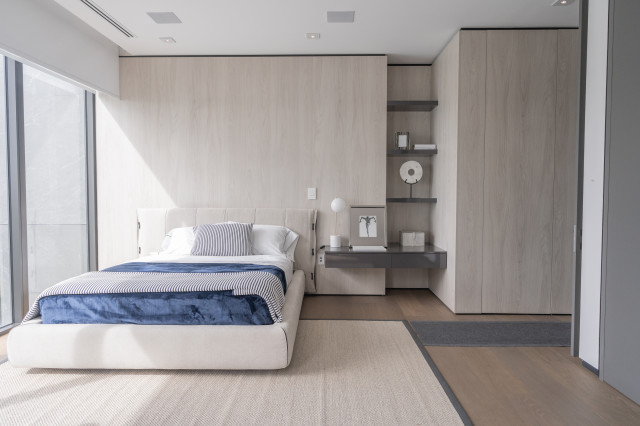6 Ways to Create a Relaxing Bedroom
After a long and stressful day, your bedroom should provide a space where you can unwind and restore your mind and body. It needs to have a soothing environment that is essential for getting restful sleep and starting each morning feeling refreshed and energized.
However, many bedrooms do not offer that kind of feel. With brightly lit lights, too much clutter, and uncomfortable mattresses can make it difficult to fall asleep and relax.
The good news is that it is relatively simple to transform your bedroom into a place that offers comfort. With a bedroom designed to promote calmness, you’ll reap the benefits of improved sleep, lower stress levels, and better mood.
Read on for six tips to help you turn your bedroom into the relaxing space it’s meant to be.
- Upgrade Your Mattress
The mattress you rest on every single night has an enormous impact on your sleep quality and how refreshed you feel in the morning. An old, lump, or unsuitable mattress can cause back and joint pain, discomfort, and sleep disruptions. This prevents you from getting deep, restorative sleep and often results in tossing, turning, and waking up frequently. For this purpose, many sleep experts recommend switching to Sealy Posturepedic Plus mattresses. This mattress range is known for its premium quality, providing the perfect blend of comfort and support.
Take time to research and test different mattresses to find one that is suitable to your personal preferences and needs.
- Use Soothing Colors
The colors that surround you as you sleep have a subtle yet influential impact on your mood and relaxation levels. Bright, stimulating colors like reds, oranges, and even certain shades of yellow can feel disruptive in a bedroom. On the other hand, soft, cool hues like blues, greens, lavenders, and pale grays have natural calming and relaxing properties.
- Paint your bedroom walls a soft color like a pale blue or light gray.
- Select bedding and accent pieces in coordinating cool colors to create a cohesive palette.
- Avoid bright whites and opt for off-whites or cream colors.
The goal is to envelop yourself in soothing colors that lower stress and promote deep relaxation as you sleep. Steer clear of vibrant colors that can feel too lively and disruptive when you want to unwind.
- Incorporate Greenery
Incorporating plants into your bedroom adds a dose of nature and offers calming benefits. Greenery purifies the air, adds oxygen, increases humidity, and helps reduce anxiety. Plus, having plants in your bedroom also helps lower blood pressure and heart rate for more restful sleep.
Place low-maintenance plants like succulents, snake plants, or pothos on your nightstand or dresser. The fresh oxygen and moisture released overnight can improve sleep. Also, consider adding large leafy plants in corners to add a tranquil vibe and hanging trailing vines or air plants in planters to add visual interest.
Avoid prickly cacti or plants with strong scents that could disrupt sleep. Houseplants with soft leaves and neutral colors complement a relaxing space.
- Use Soft Fabrics
The textures and fabrics in your bedroom can greatly impact your ability to relax. Scratchy or synthetic fabrics can feel irritating against your skin and make it difficult to get comfortable. Surrounding yourself with ultra-soft and soothing fabrics helps create a welcoming environment that says it’s time to relax.
Invest in soft, breathable sheets with a high thread count, like Egyptian cotton or linen. These natural fibers feel sublime against your skin.
- Choose lightweight blankets and quilts in place of heavy, bulky options.
- Upgrade your pillowcases to silky satin or smooth cotton.
- Incorporate plush, cozy throws made from wool or cashmere.
- Sheer curtains in natural fabrics gently filter light.
The goal is to envelop your body in the most soothing, delicate textures as you unwind.
- Declutter and Clean Your Space
Clutter is visually and mentally distracting, making it harder for your mind and body to fully relax. Clearing away clutter helps create a peaceful setting that instills a sense of calm and order. Make tidying up part of your daily routine.
- Put away piles of clothes, shoes, accessories, and other objects.
- Store items out of sight in closets, drawers, and baskets.
- Remove non-essential décor items from surfaces.
- Smooth out your bed linens and blankets.
- Keep cords and chargers neatly arranged, and consider using cable organizers to prevent a tangled mess.
- Dust surfaces, including shelves, nightstands, and decorations, to maintain a clean environment.
- Make sure your furniture arrangement is optimized. Avoid blocking pathways or creating obstacles.
A decluttered space clears your mind, while a messy room can make you feel anxious and overwhelmed. Develop clutter-free habits so your bedroom always feels like a serene retreat.
- Limit Electronics
The glow and noise from TVs, phones, tablets, and other electronics can keep your brain engaged, making it difficult to unwind. Limiting electronics in your bedroom prevents mental stimulation when you want your mind to power down.
Ideally, the only electronics in your room should be small bedside lamps. Remove TVs, phones, and computers completely. This allows your body to understand it’s time for sleep and prevents you from scrolling or watching shows all night long. Disconnecting from electronics allows you to be present and relax fully.
Your bedroom will become a peaceful, tech-free zone.
Conclusion
Creating a relaxing environment in your bedroom is simple, with a few key upgrades. Focus on a restful color scheme, natural elements like plants and greenery, soft fabrics and textures, dim ambient lighting, decluttering your space, limiting electronics, and incorporating aromatherapy. With these tips, you can transform your bedroom into a space that promotes deep relaxation and rejuvenating rest. The ambiance of your bedroom has a direct impact on your ability to unwind and recharge. Follow these suggestions, and you’ll look forward to retreating to your newly relaxing bedroom each night.




